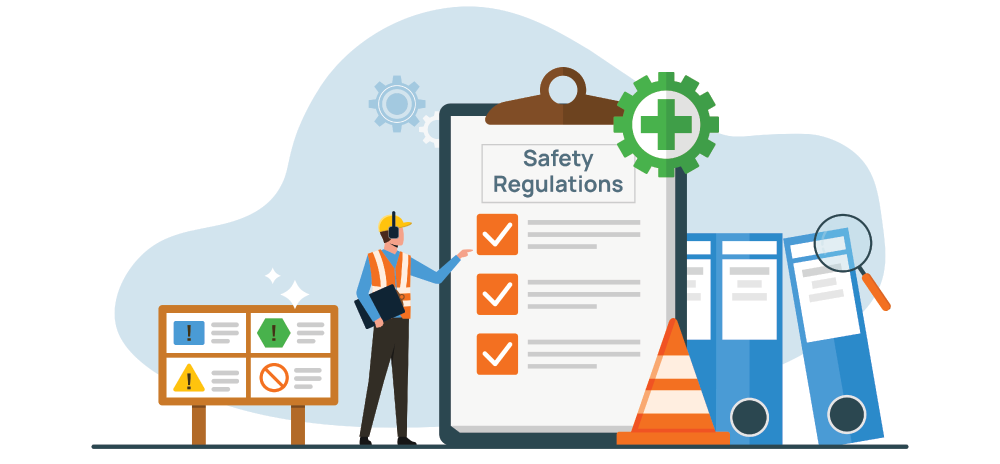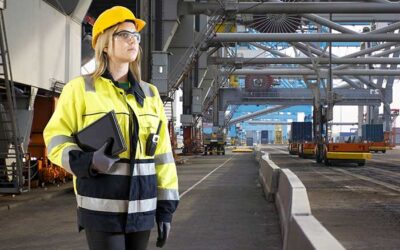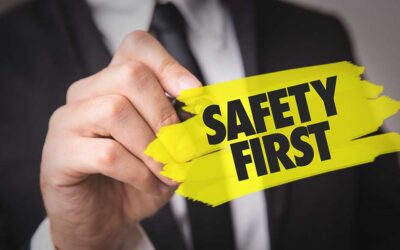Safety in the workplace is not just a regulatory requirement but a crucial component of a healthy organizational culture. As the guardians of company culture and employee well-being, HR professionals play a pivotal role in ensuring a safe working environment. Here’s a primer on what HR professionals need to know.
Understanding Legal Requirements. What is OSHA?
Every country, and often specific regions within countries, has laws and regulations related to safety in the workplace. In the U.S., for instance, OSHA (Occupational Safety and Health Administration) is an agency of the United States Department of Labor. It was established in 1970 by the Occupational Safety and Health Act. It is primarily responsible for ensuring safe and healthy working conditions for working men and women by setting and enforcing standards and providing training, outreach, education, and assistance.
How Does OSHA Affect Safety in the Workplace?
- Setting and Enforcing Standards: OSHA sets safety and health standards for various industries and enforces them through inspections and penalties for non-compliance.
- Regular Inspections: OSHA conducts workplace inspections to ensure employers adhere to the standards set forth by the agency. These inspections can be routine or in response to reported workplace incidents or complaints.
- Training and Education: OSHA provides training and educational programs for businesses and workers on safety practices and protocols. This includes resources and guidelines on various workplace hazards, from chemical exposures to ergonomics.
- Outreach Programs: OSHA has outreach programs aimed at improving workplace safety. These programs provide information and guidance to employers and employees to reduce workplace accidents and exposures.
- Whistleblower Protections: OSHA protects workers who report violations of safety and health standards from retaliation by employers. This ensures that workers can voice their concerns without fear of repercussions.
- Consultation Services: OSHA offers a free and confidential consultation service to small and medium-sized businesses to help them understand and comply with OSHA standards.
- Research and Data Collection: OSHA researches to develop new standards and collects data on workplace injuries and illnesses. This helps the agency track trends, identify emerging risks, and refine its regulatory approach.
In essence, OSHA plays a pivotal role in shaping and ensuring safety in the workplace in the U.S. Its standards and guidelines provide a framework for employers to create a safe working environment, and its enforcement actions serve as a deterrent to lax safety practices. OSHA promotes a safety culture through its many programs and services, helping reduce workplace injuries and fatalities.
Beyond Compliance
In addition to understanding the role of agencies like OSHA, there are several other critical areas related to safety in the workplace that HR professionals and business leaders should be aware of:
- Company Safety Policy: Every company should have a clear and concise safety policy regardless of size or industry. This policy should be regularly updated and communicated to all employees.
- Employee Engagement: Employees should be encouraged to take an active role in safety. This includes participating in safety committees, reporting hazards, and following safety protocols. A transparent system where employees can report safety concerns without fear of reprisal is crucial. HR should advocate for anonymous reporting mechanisms and ensure that all problems are addressed promptly and thoroughly.
- Safety Culture: Beyond just rules and regulations, fostering a culture where safety is valued and prioritized is crucial. This culture is often set by leadership and reinforced through training, communication, and recognition programs. Safety education should be integral to onboarding, with regular employee refreshers. Knowledge empowers employees to act responsibly and safely, whether properly using equipment, ergonomic practices, or emergency evacuation procedures.
- Emergency Preparedness: Every workplace should have an emergency response plan for various scenarios, from fires and floods to active shooter situations. Regular drills and training sessions can ensure everyone knows what to do in an emergency.
- Ergonomics involves designing the workplace and tasks to fit the worker, preventing musculoskeletal disorders and other injuries. Considerations might include the design of workstations, the selection of tools, or the sequence of work processes.
- Continuous Learning and Improvement: As industries evolve, new safety challenges emerge. Regular training and updating on best practices and new technologies can help mitigate unknown risks. New tools and technologies can introduce new safety challenges. HR should stay informed about the latest tech trends in their industry and the associated safety implications. They should also ensure that employees are trained adequately whenever new tools or procedures are introduced.
- Hazard Communication: Employees should be informed about any potential hazards they might be exposed to. This includes chemical hazards, machinery risks, or repetitive stress injuries. Clear labeling, safety data sheets, and training are crucial.
- Record Keeping: Maintain a record of all injuries, illnesses, and incidents. This not only helps in compliance with regulations but also aids in identifying patterns and areas of concern.
- Workplace Health: Beyond just injury prevention, consider employees’ overall health and well-being. Safety in the workplace isn’t just about physical well-being. Emotional and mental health are equally important. This might involve initiatives related to mental health, stress management, or general wellness. HR professionals should ensure employees have access to mental health resources and a culture of understanding and support.
- External Resources and Partnerships: Engage with industry associations, local safety councils, or consultancies specializing in workplace safety. They can provide valuable insights, resources, and training.
- Global Operations: If a company operates internationally, it must be aware of and comply with local safety regulations and cultural practices in each country.
- Contractor and Third-party Safety: If you employ contractors or have third-party entities operating on your premises, ensure they adhere to your safety standards and protocols.
Risk Assessment
Proactively identifying potential hazards is critical. In conjunction with departmental managers, HR professionals should conduct regular risk assessments. This not only helps in preventing accidents but also aids in formulating a robust emergency response plan.
Regular Safety Audits
Regular safety audits can help identify potential risks that might have been overlooked initially. This proactive measure ensures that the workplace remains compliant with safety standards and can adapt to new challenges or changes in the work environment.
Personal Protective Equipment (PPE)
If the nature of the job requires it, HR must ensure that employees are provided with appropriate PPE and trained in its proper usage. Moreover, ensuring regular maintenance and checks of this equipment is vital for ongoing safety.
Safety in the Workplace is a Shared Responsibility
Ensuring workplace safety is a shared responsibility, and HR professionals play a significant role in this endeavor. By staying up-to-date, taking preventive measures, and fostering a culture that values safety, HR can guarantee adherence to regulations and prioritize the welfare and confidence of all staff. A secure work environment can notably boost productivity, decrease employee turnover, diminish insurance expenses, and elevate employee morale.




